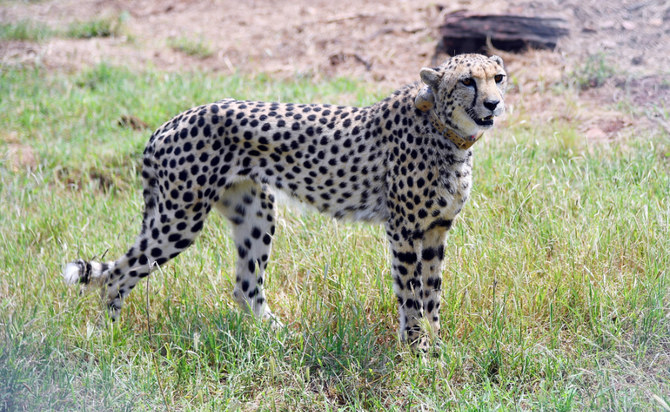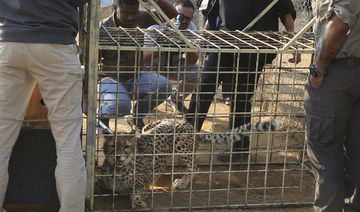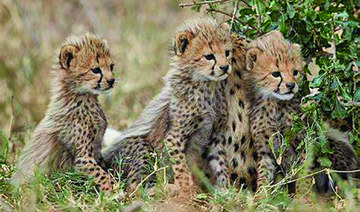NEW DELHI: Eight Namibian cheetahs arrived in India on Saturday, part of an ambitious project to reintroduce the world’s fastest land animal to the South Asian country where it has been extinct for over 70 years.
Cheetahs, once found in great numbers across Africa and Asia, are facing the threat of global extinction, with their population estimated to be fewer than 8,000 in the wild, down by 50 percent over the last four decades.
In India, local extinction was officially declared in 1952 following years of extensive hunting and habitat loss. Project Cheetah — launched on Indian Prime Minister Narendra Modi’s birthday, Sept. 17 — is expected to cost $11 million over five years. The Indian Oil Corporation is offering financial support.
“Decades ago, the age-old link of biodiversity was broken and had become extinct. Today, we have a chance to reconnect it,” Modi said after releasing the wild cats into a soft enclosure in Kuno National Park. “Twenty-first-century India is giving a message to the whole world that economy and ecology are not conflicting fields.”
FASTFACT
Cheetahs, once found in great numbers across Africa and Asia, are facing the threat of global extinction, with their population estimated to be fewer than 8,000 in the wild, down by 50 percent over the last four decades.
The plan is to relocate batches of cheetahs from southern Africa into India, until the country has a cheetah population of around 40. On Saturday, the first batch arrived on a Boeing 747 from Namibia and were taken to their new home in the central Indian state of Madhya Pradesh.
Dr. Satya Prakash Yadav, director of Wildlife Institute of India, which will oversee the project, told Arab News that this is the first intercontinental relocation of cheetahs that will be released into the wild.
“The plan is to have 20 cheetahs in the first year and after that, depending on adaptability, their survival, their conservation, their breeding and behavior, we will supplement the population every year for the next five years, unless a viable better population is established,” Yadav said. At Kuno, the cheetahs will share 5,000 square kilometers of forest and grassland with other wildlife, including leopards. But experts say that is not enough space for the newly arrived cats to thrive.
The ambitious experiment should provide a habitat of at least 10,000 square kilometers and include a population of wild prey for the cheetahs, according to Ullas Karanth, a wildlife expert at the Center for Wildlife Studies in the southern city of Bangalore. Kuno is too small to sustain a cheetah population, he said.
“That habitat should have been created first before bringing these African cheetahs,” Karanth told Arab News. “The present project puts the cart before the horse, bringing cheetahs before the habitat is suitably prepared.
“This is not a scientific conservation goal, more of a public relations effort which will end up as just another large tourist zoo.”
“The key question that needs to be asked is: What is the purpose of this exercise?” Avijit Sarkhel, a Delhi-based wildlife activist, told Arab News, as he raised concerns about India’s ability to protect the cheetahs.
“I am not sure if this is a wise decision. To me, it is more about reclaiming India’s spot as the largest pool of wild cats in the world,” Sarkhel said. “We need to see how we can manage this.”
Kuno National Park was intended to become home to some of the last remaining Asiatic lions — and experts say that the area is more suitable for those animals. Residents of some two dozen villages were relocated for that project, which promised tourism development for the region.
But the project stalled after the government of the state of Gujarat, where all the Asiatic lions live, opposed the move. Two years ago, the Supreme Court ruled in favor of a plan to bring in cheetahs from Namibia, imported on an experimental basis.
“We should remember that the villages which were evacuated suffer from extreme poverty, malnutrition and backwardness and these problems would have been addressed had tourism been allowed to develop around Kuno National Park,” Ajay Dubey, a wildlife and social activist from Bhopal city in Madhya Pradesh, told Arab News.
With the cheetahs now brought in for the purpose of restoring their population, the “villagers have lost all hopes of improvement in their livelihoods,” Dubey claimed.

























